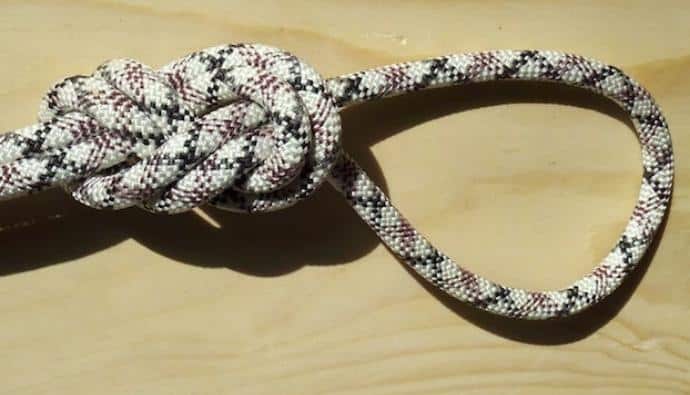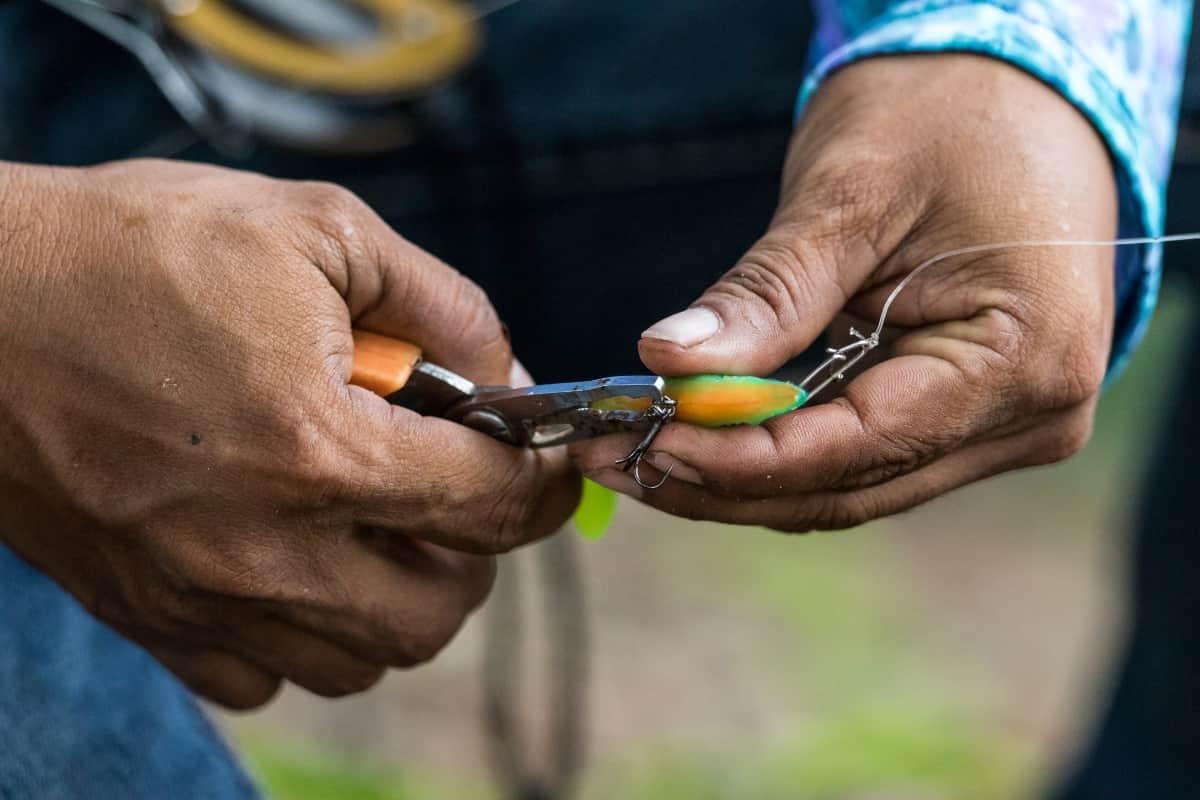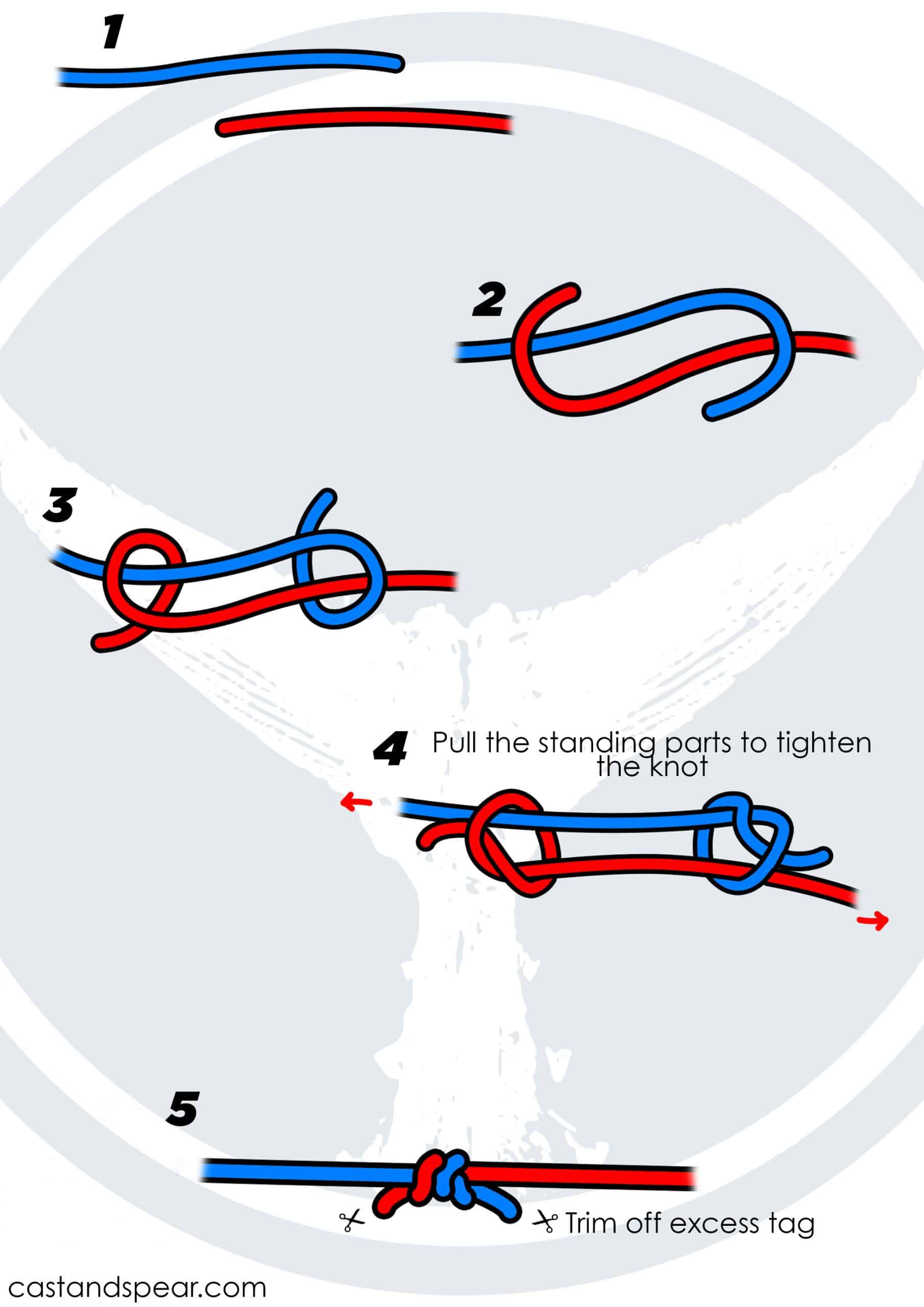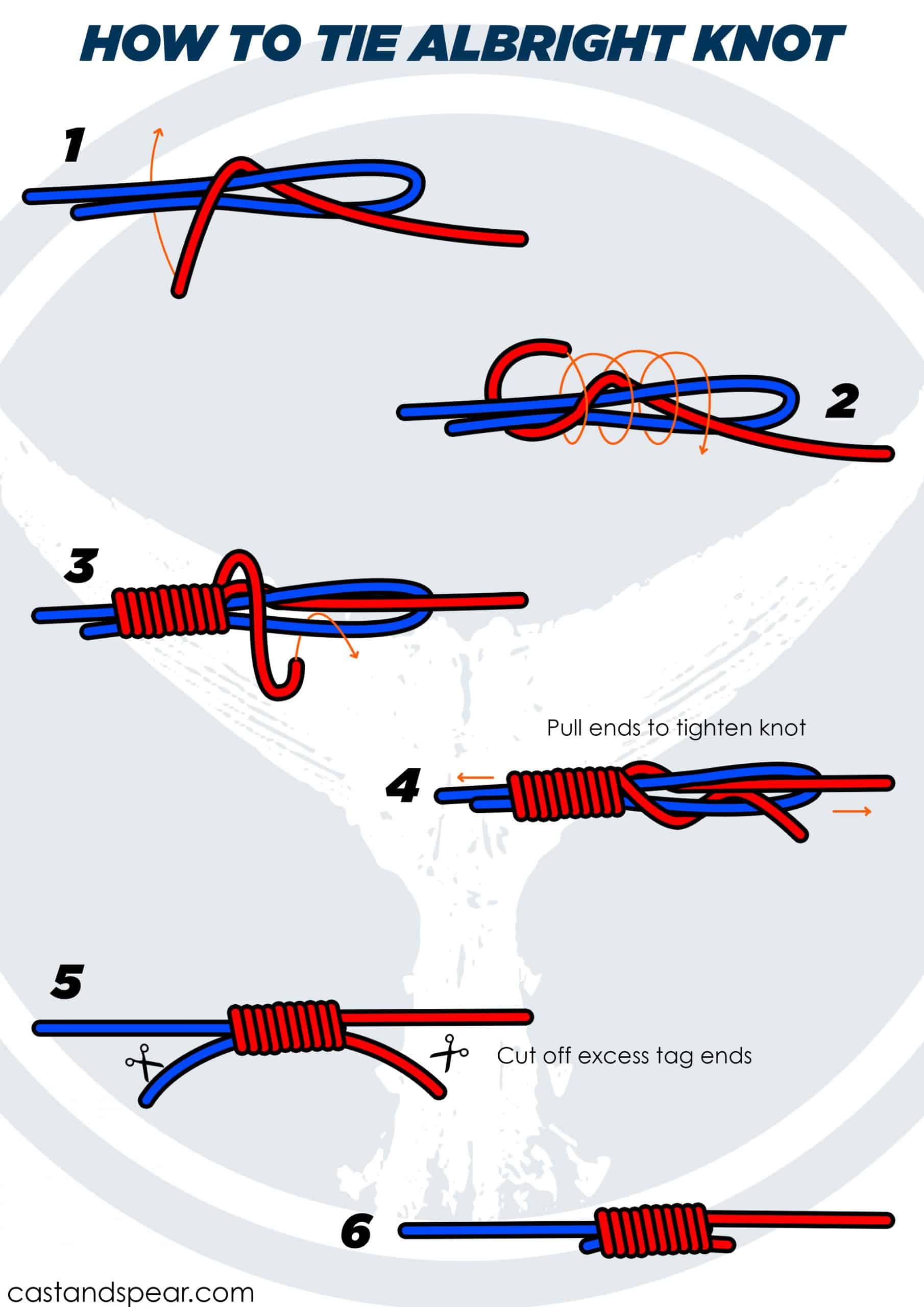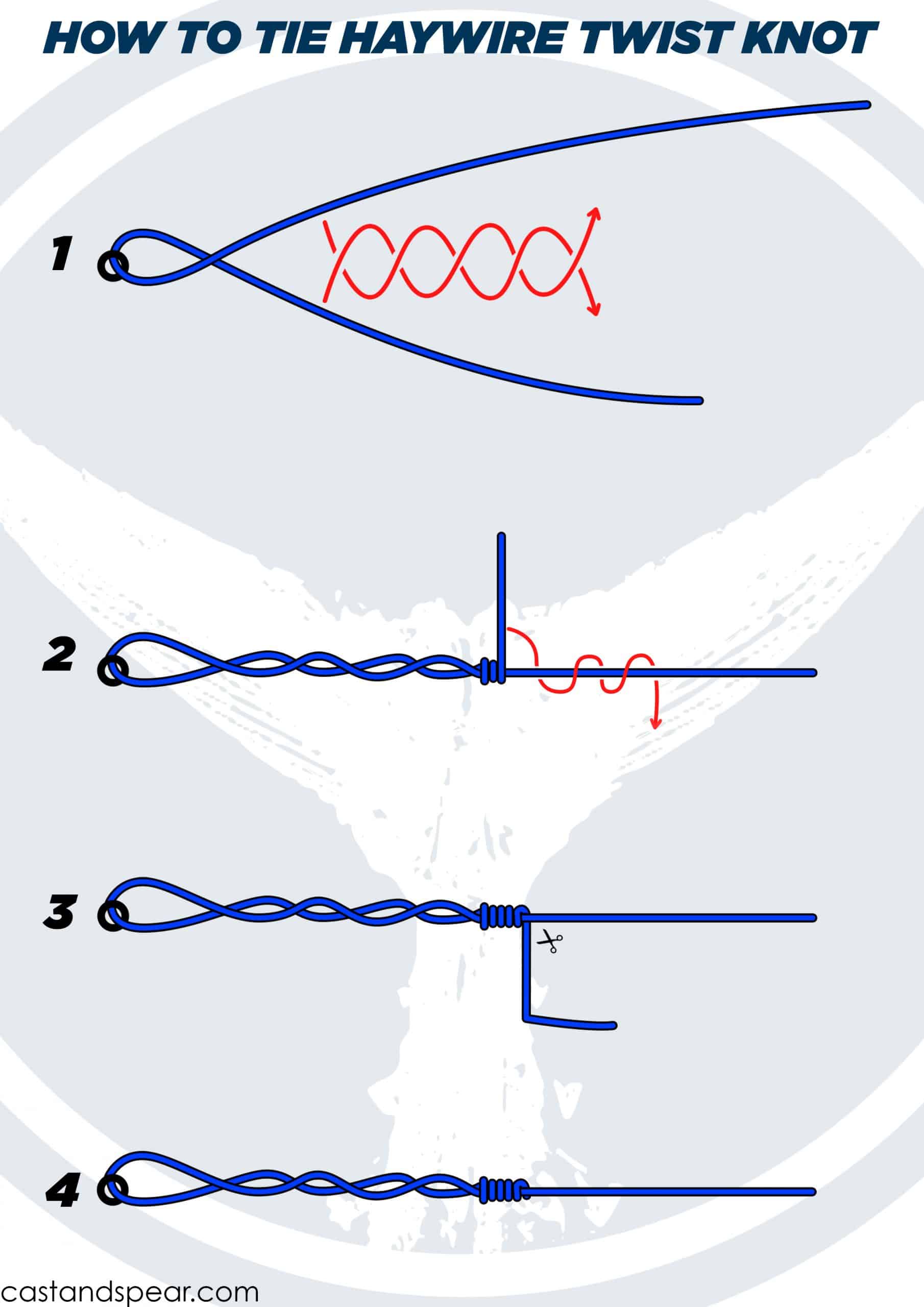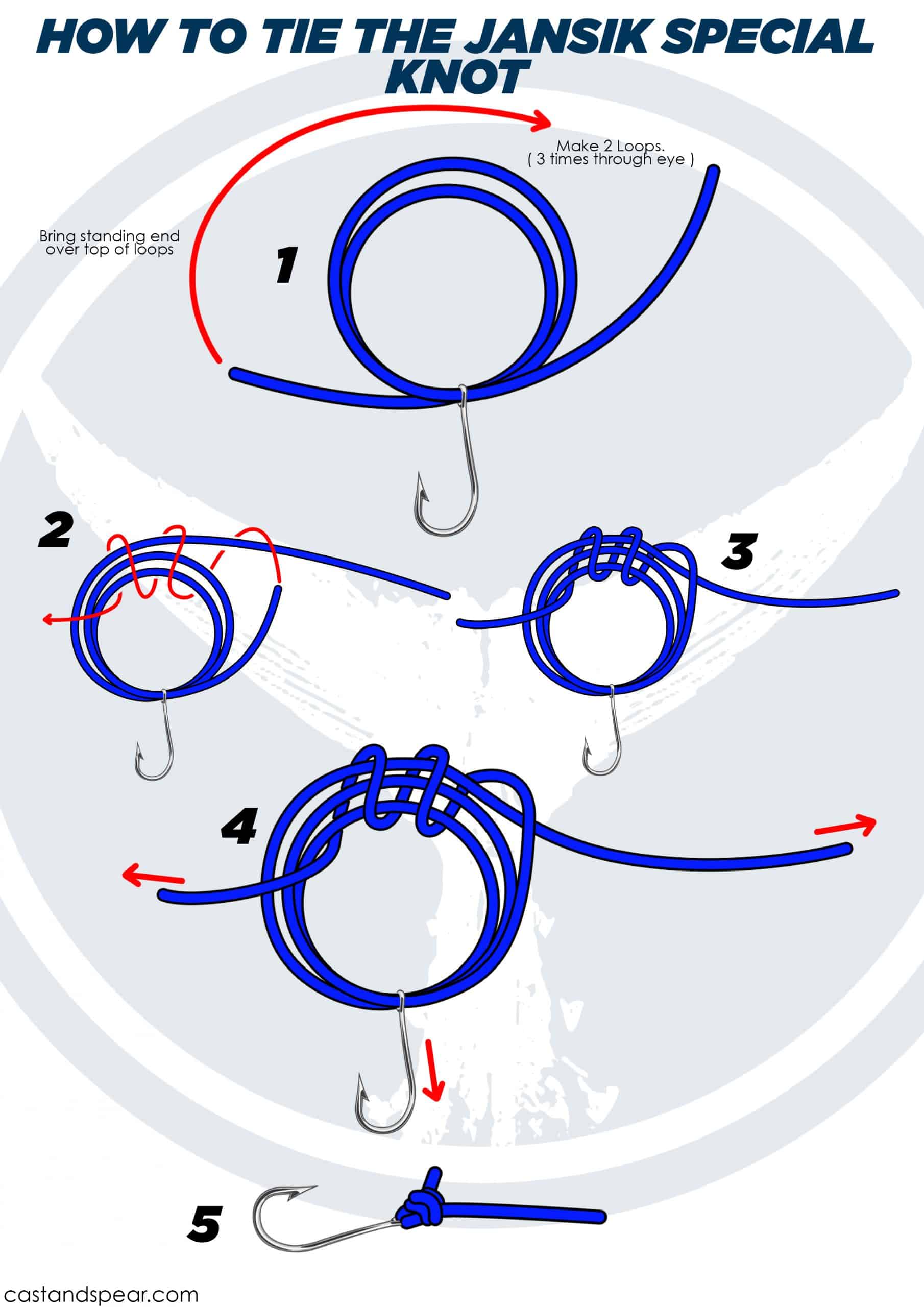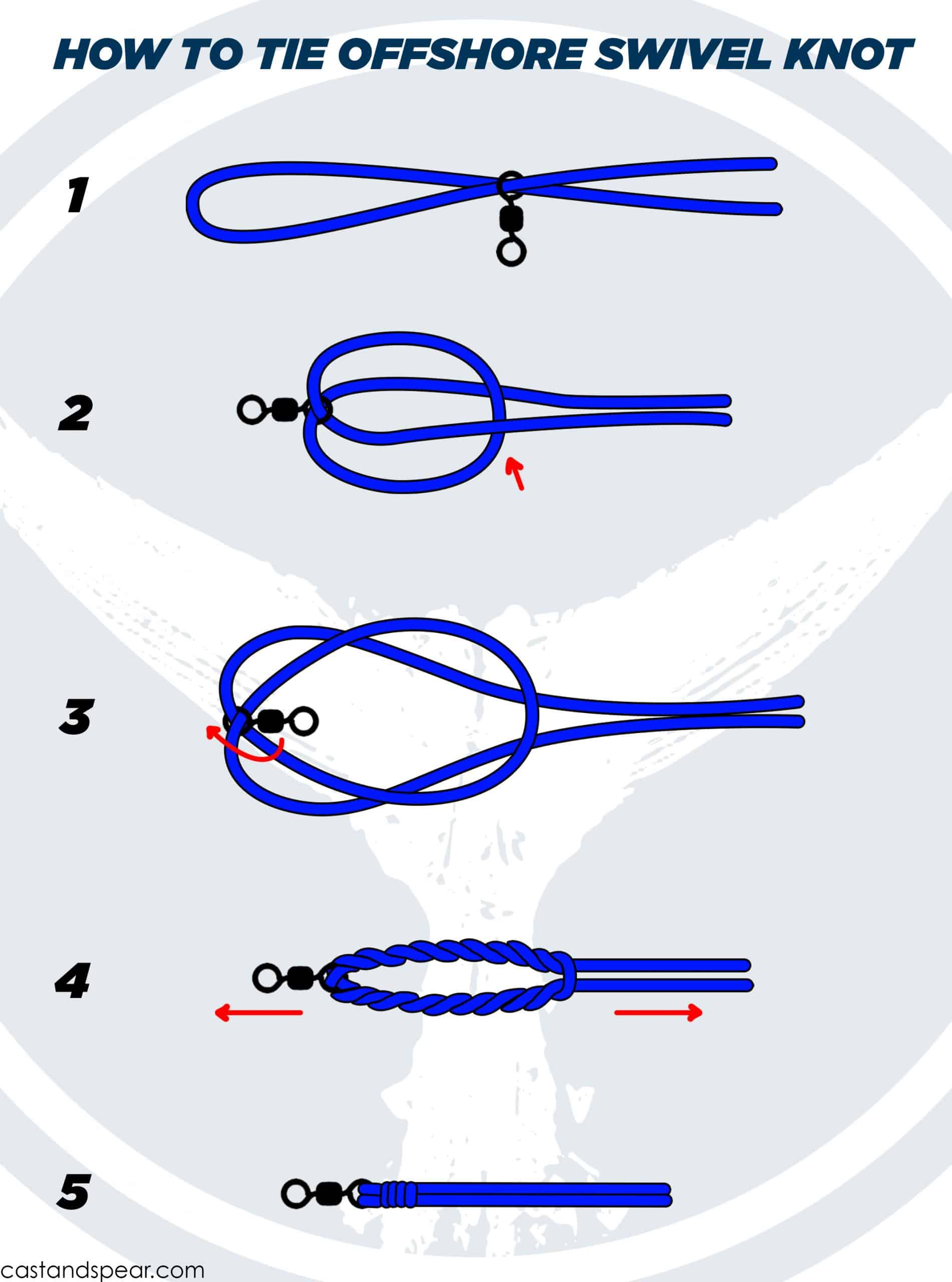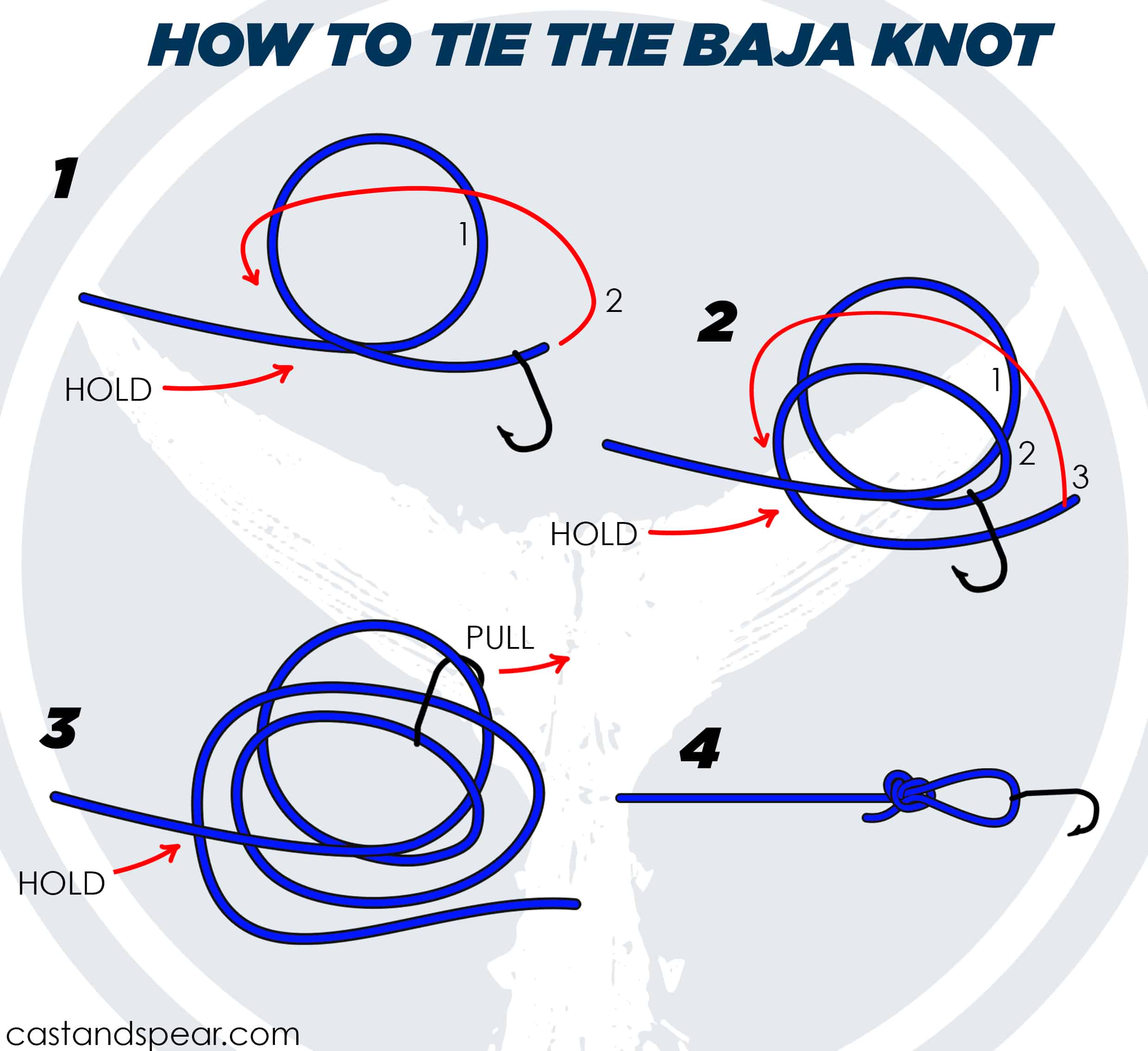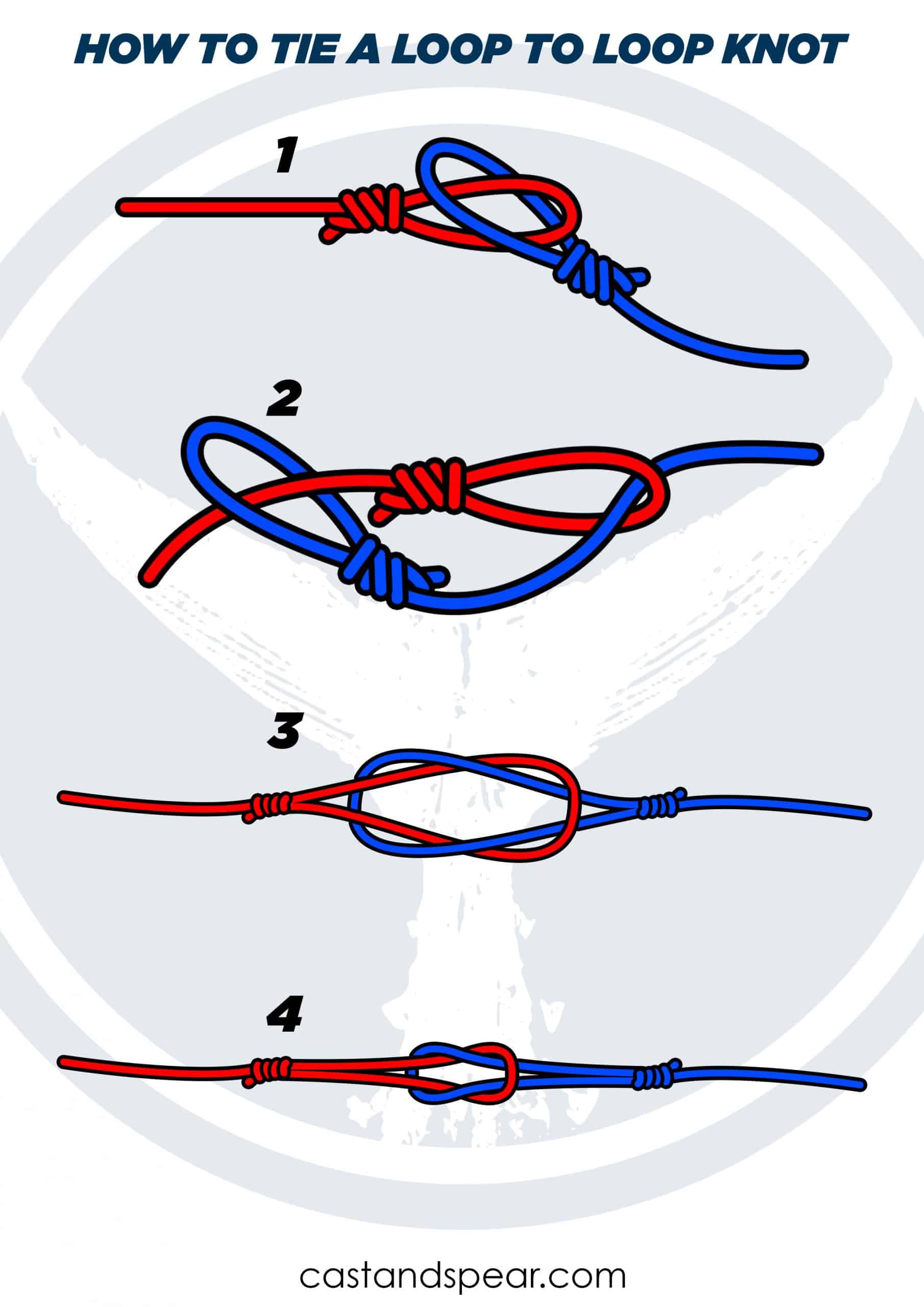Also known as the two-turn clinch knot, the Trilene knot is robust and reliable when it comes to tying a mono and a fluorocarbon to hooks, snaps, and swivels.
It is also a famous loop knot for lures. Equal in strength to the Palomar knot, it forms a double wrap through the eyelet, a feature it shares with efficient knots. It was invented for a promotional event for Berkley the makers of the Trilene fishing line.
Trilene Knot Tying Instructions
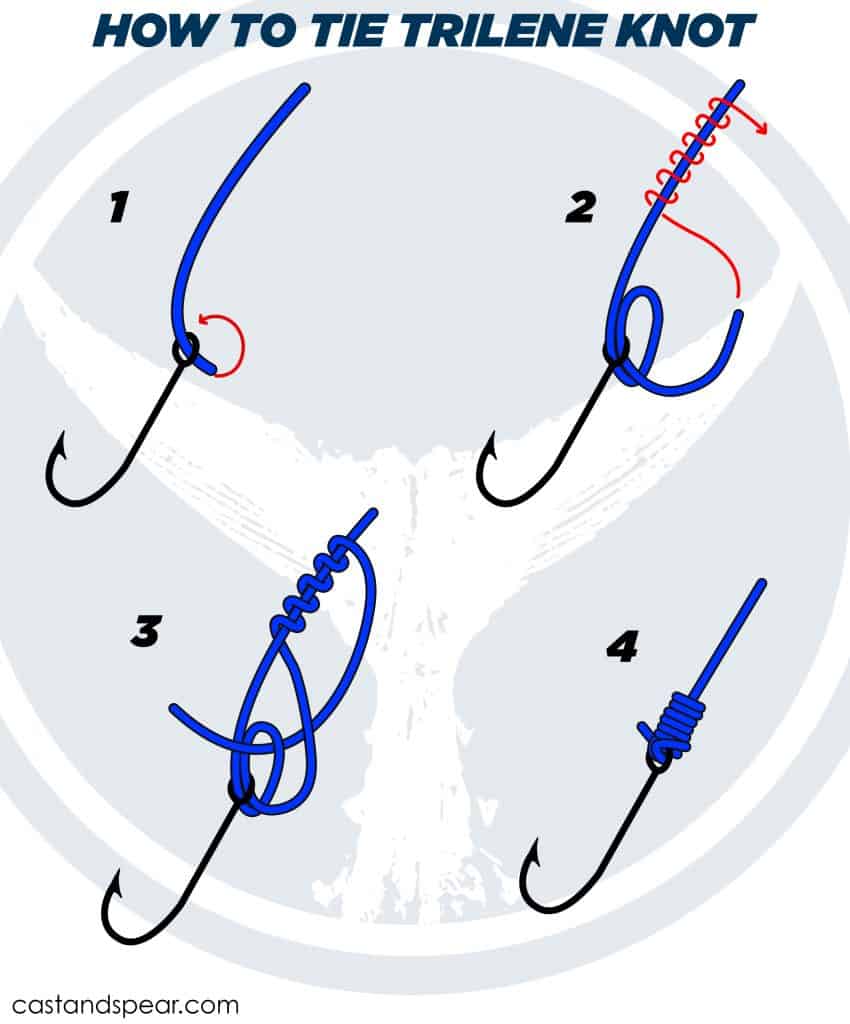
- Slide the tag end of the line through the eye of the hook or the lure. Pull enough inches to work.
- Pass the same line through the hook or lure another time.
- Make six wraps around the mainline with the tag end.
- Slide the tag end of the line through the double loop that forms at the hook eye or lure.
- Moisten with water or saliva before you pull tight.
- Cut off the tag end to close and complete tying the Trilene fishing knot.
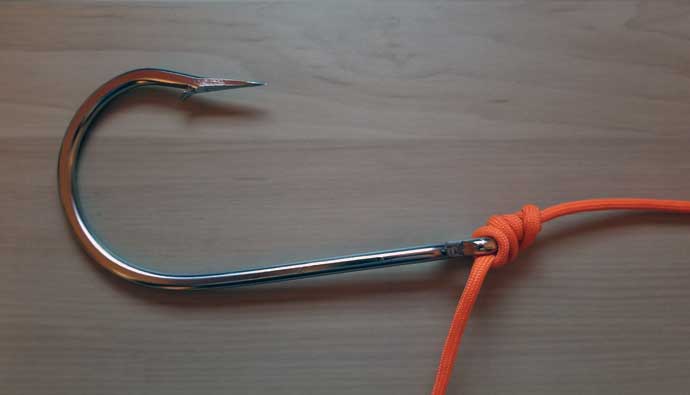

Uses
- The Trilene knot is famous for fly fishing.
- The Trilene knot joins a mono or fluorocarbon line to snaps, swivels, hooks, and artificial lures.
Tips
- When you are trimming the tag end of the Trilene knot, leave 1/8th of an inch of line.
- Moisten the knot at the end before tightening it to make it holdfast.
- You will find tying this fishing knot difficult at first, especially the part where the line has to be looped through the eye twice. The more you practice, the more adept you will become.
Advantages
- The Trilene knot is resistant to slippage and failures.
- The Trilene knot works with both Dacron and nylon braids.
Disadvantages
- This knot is not suitable for braided lines made from gel.
- The tight fishing knot can be challenging to tie, especially when you need to make a double loop and pass it through the eye.
Alternatives
- Improved Clinch Knot – Even though it is weaker in comparison to other fishing line knots, this knot eliminates the double knot in favor of an extra tuck at the final turn.
- Clinch knot – Is ideal for tippet connections.
- Nanofil knot – This is a double Palomar knot.
Frequently Asked Questions
Q: Is the Trilene knot good for fluorocarbon?
A: Yes, this knot is ideal for fluoro lines fastened to a hook, swivel, or lure.
Q: How strong is this knot compared to other fishing knots?
A. This knot can match the strength of the line by 85%, which is rare in most, but it can be challenging to tie in comparison. Passing the line through the eye of the hook can be challenging.
Q: How do I make this knot stronger?
A: Make sure you moisten the line at the end, and the knot will hold fast. This may take some time to perfect.




 Facebook
Facebook YouTube
YouTube